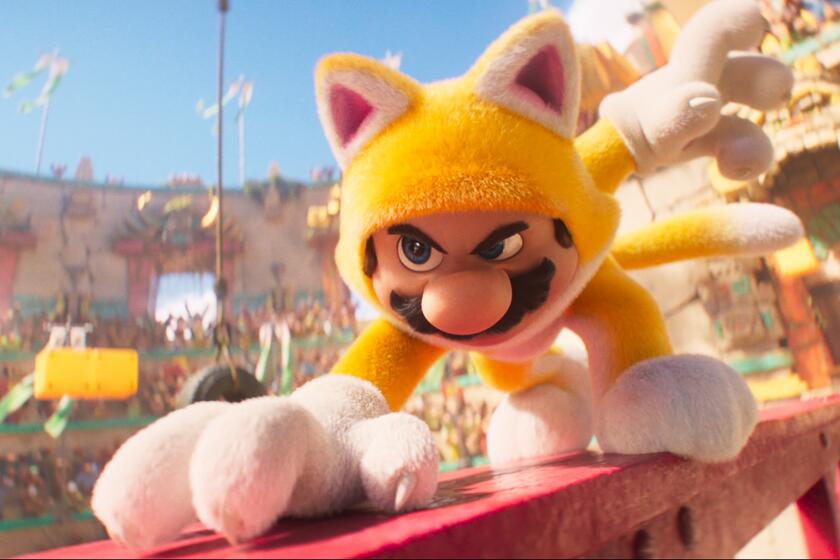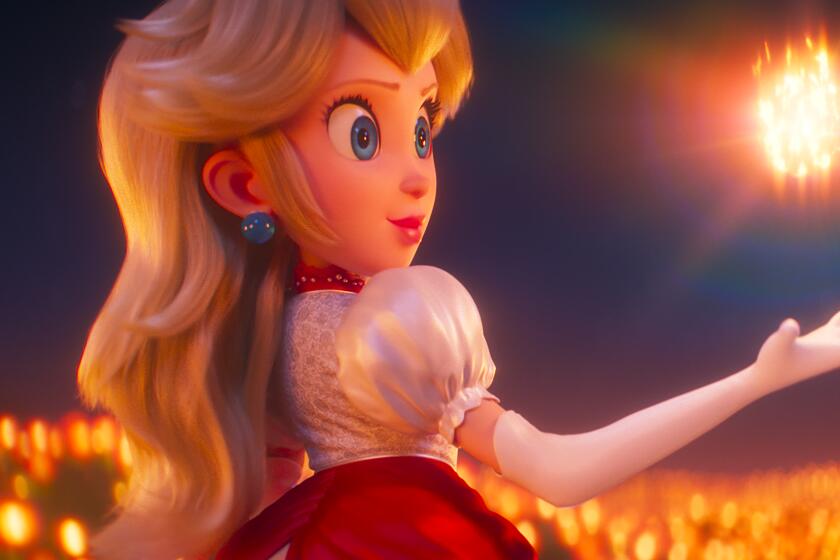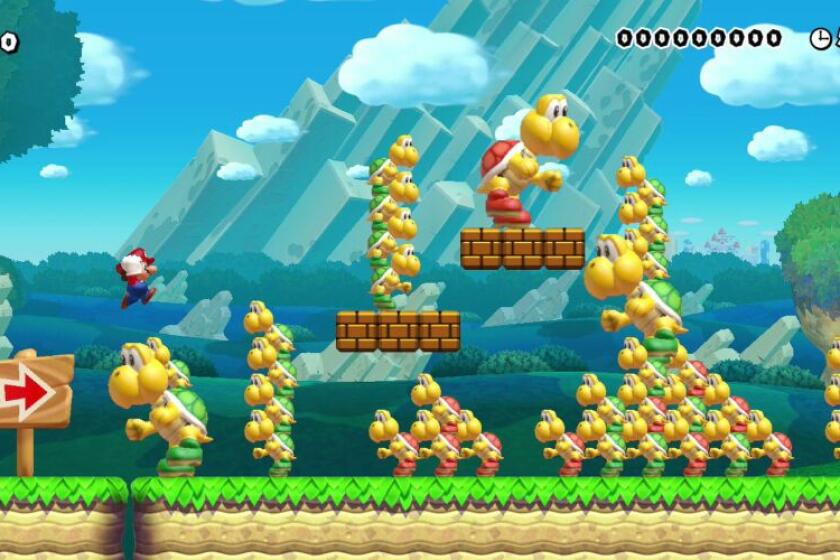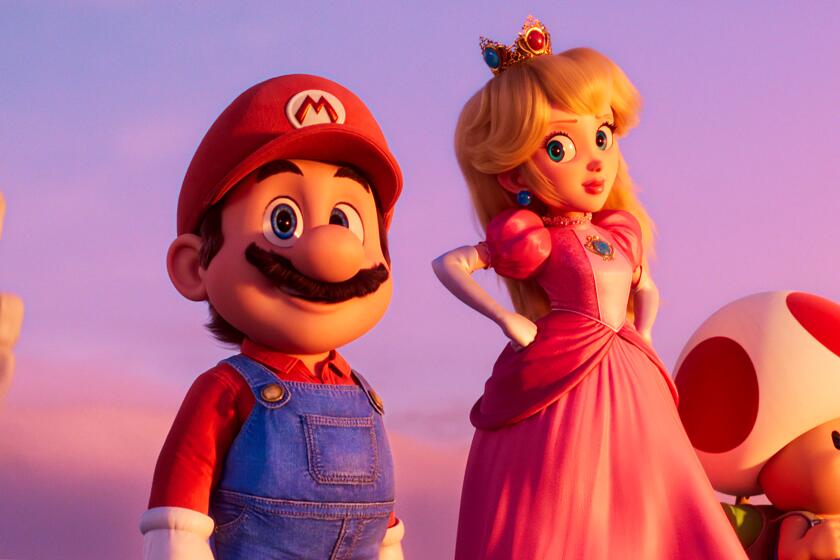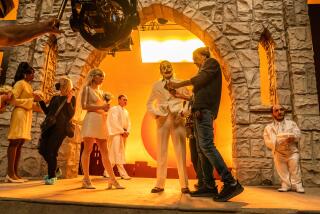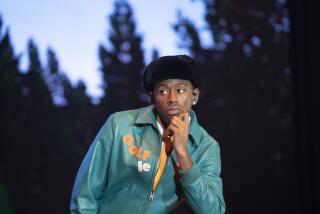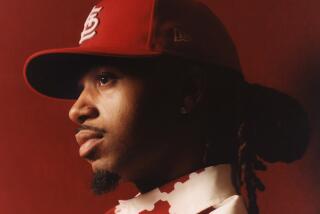‘Super Mario Bros. Movie’ composer levels up: ‘I want this score to be my ‘E.T.’’
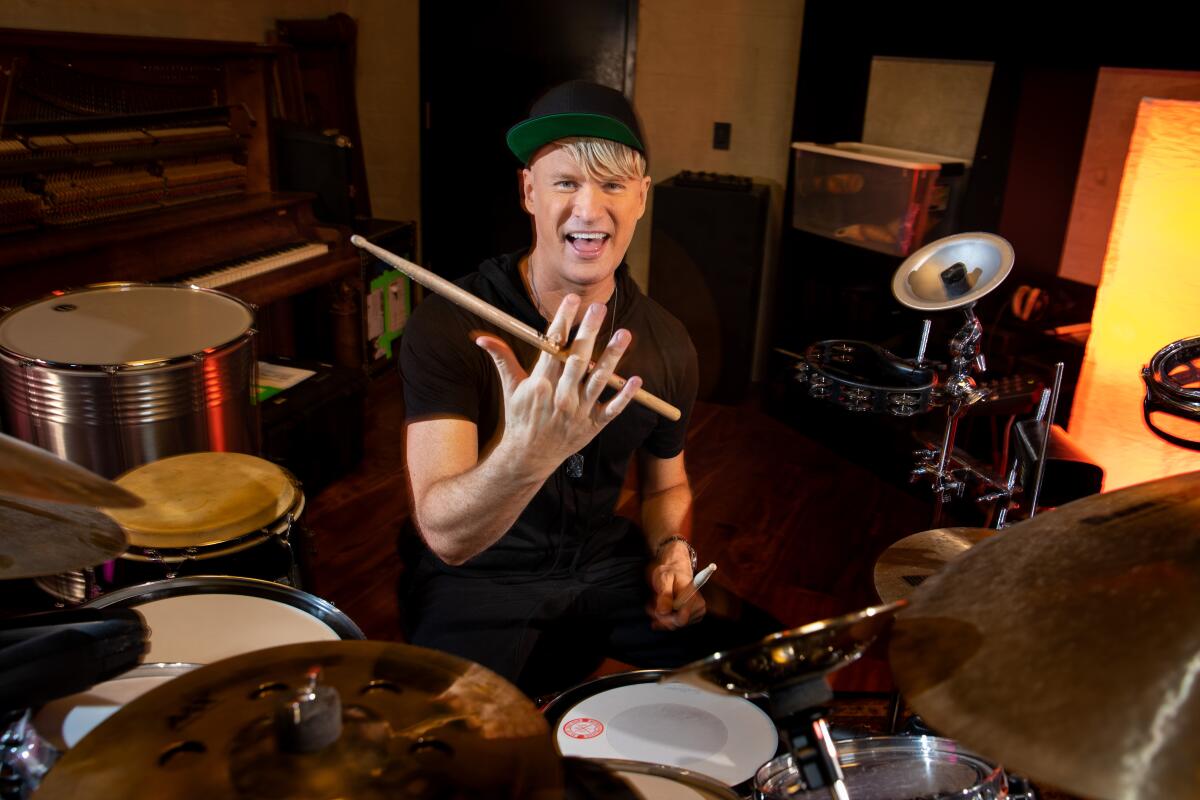
One hundred and thirty. That’s the minimum number of references to the various “Mario”-branded video games that “Super Mario Bros. Movie” composer Brian Tyler estimates he included in his score for the film.
We’re not fact-checking him, but to get anywhere near that number requires a certain type of obsession and passion. Ask him about the music for “The Super Mario Bros. Movie,” and in seconds he’s connecting the game’s original composer, Koji Kondo, to John Williams’ work on “E.T. the Extra-Terrestrial” and “Close Encounters,” as well Jerry Goldsmith’s compositions for the “Rambo” films and ’80s electronic music. Of course, he just saw Depeche Mode — a band whose music he describes as capturing a moment of ecstasy before an impending doom — so the latter is on his mind.
We sit down with ‘Super Mario Bros.’ creator Shigero Miyamoto ahead of the opening of the new animated film.
“I was influenced by the fact that ‘E.T.’ and ‘Donkey Kong’ came out in the same era, at least as I was playing it as a little kid,” says Tyler, sitting in a basement home studio flanked by an assortment of keyboards, including one of his childhood synthesizers. “That’s what this is. I have that soaring, romantic big movie quality that I remember from that Steven Spielberg and John Williams stuff, but combined with this world of ‘Super Mario.’”
Tyler is clear as to his musical ambitions for the film: “I want this score to be my ‘E.T.’”
Lofty goals, especially for a movie about a plump plumber transported to a fantasy world where a dragon-like turtle is obsessed with a princess, as well as one based on a game with its own instantly recognizable score. It’s one people, including Tyler, can’t help but hum when discussing, a digital yet swinging tune that’s all about forward momentum. But Tyler clearly understands the assignment. When he discusses film scores, he transitions quickly to the concept of world-building, using music as a communication device — a way to telegraph emotions, drive actions and speak to an audience without words. He’s referential to Kondo’s masterworks, but also eager to expand upon them.
His score for the film from Nintendo, Illumination and Universal takes Kondo’s themes and runs with them, sometimes incorporating them into his own or rearranging them as more abstract sounds. In the game, for instance, when Mario went underground, the score got dark and bass-heavy, a contrast with the bright, cheery above-ground world. Tyler in one scene imagines those notes as something more mystical — starry tones that push the Chris Pratt-voiced Mario forward. But while everyone may know Mario’s themes, Tyler had a blank canvas for those surrounding Princess Peach or nemesis Bowser. Tyler approaches the former with a romantic exuberance and the latter with militaristic symphonies, with the music acting as the comedic straight man to the villain’s ineptitude.
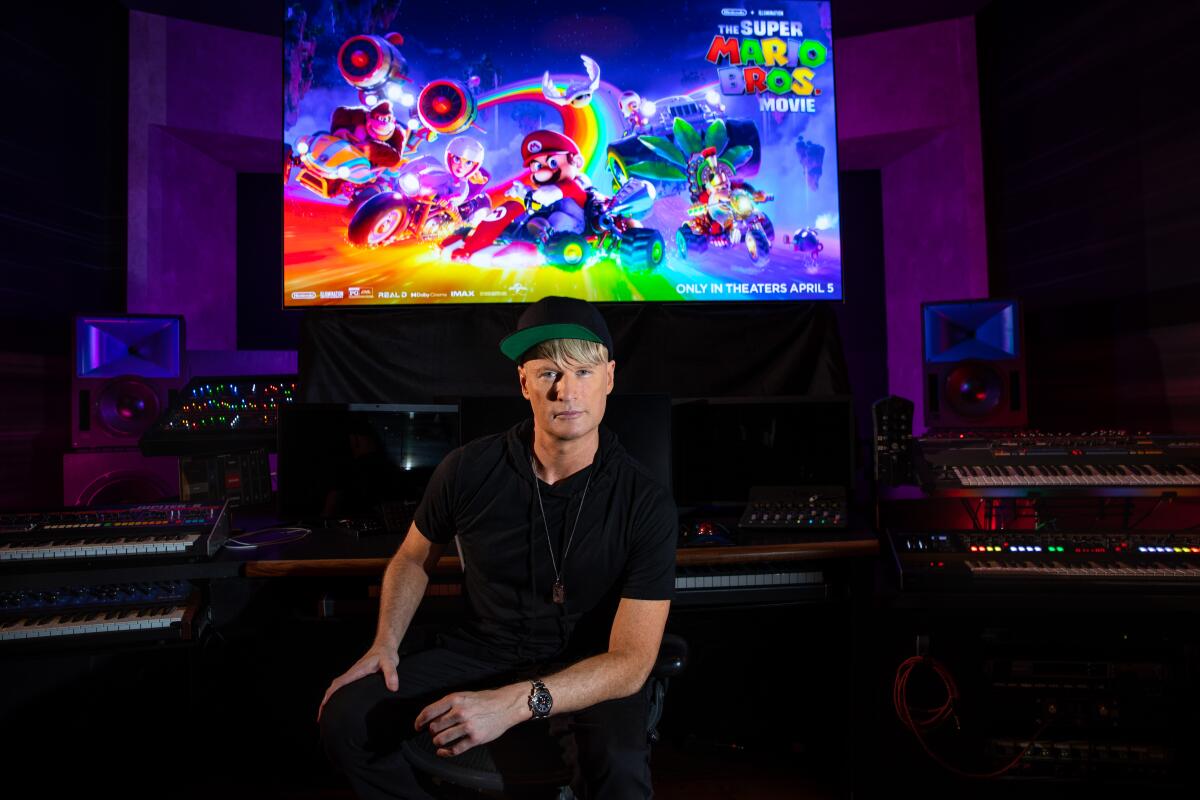
All of it is approached as a love letter to Kondo’s original works, with Tyler mixing and matching bold instrumentation with digital flourishes. It sounds both retro and of-the-moment, with as many nods to hip-hop as there are to jazz and 8-bit music. “It was a palate that is unique to ‘Mario,’” Tyler says. “This exact combination of instruments would be crazy in another movie. It was a blast. There were some times where I would play drums and congas, and I would just make tom-tom fills, but on the third tom I would switch to 8-bit toms. It would go into stuff that would be generated, like code. Those games were an electrical current.”
And yes, the core “Super Mario Bros.” is heard in the film. The game’s creator, Shigeru Miyamoto, says the music was initially influenced by arcades of the early ’80s. Though “Super Mario Bros.” was a hit on the Nintendo Entertainment System home console, Miyamoto says the goal was to create something instantly catchy that would grab the ear of someone walking through an arcade. Miyamoto wanted the theme to follow Mario as games evolved, and today it can be heard anywhere from “The Super Mario Bros. Movie” to the Super Nintendo World lands at multiple Universal Studios parks, including in Hollywood.
“People from across generations can enjoy it, and when they hear it, they may be thinking about different games, but the important factor is they recognize the series,” says Miyamoto, who was speaking through an interpreter. “I think a lot of people, when they start a new game, want to do something new and different, but at this day and age, I feel very happy and proud that we stuck to our guns and made sure that the core fundamental aspect is something we maintained through all these years.”
In ‘The Super Mario Bros. Movie,’ the elusive Peach has more personality than ever — and wins over a gamer who’d avoided the character all her life.
Miyamoto’s games such as “Donkey Kong” and “Super Mario Bros.” were formative texts for Tyler when he was younger, he says. The artist, who tours as an electronic musician and whose credits include the “Fast & Furious” franchise, “Crazy Rich Asians” and “Thor: The Dark World,” was discovering those early Nintendo works the same time he was falling in love with film scores, particularly those from Williams. While home copies of movies weren’t as easy to come by in the early ’80s as they are today, Tyler recalls that he would record the audio of his favorite films — “Star Wars,” “Rocky” and “Tron” among them — and then listen to them on a portable cassette player and memorize them.
The ultimate goal was for the Corona Del Mar native to imagine himself in their soundtracks. “I’d go to bed and put on music and in my mind I could see the whole movie,” Tyler says. “It became part of my existence. When I would ride my bike and go to the record store, I’d always be listening to the soundtracks. ... I thought cinematically. I pretended I was in a movie. I would put on music and be walking through an airport, and imagining I was walking in slow motion and there was an explosion behind me. This is since I was a kid. First time I was on a plane I was pretty young.”
When Tyler was devouring soundtracks — and begging his parents to help him build a collection of musical instruments — Nintendo’s Kondo was an aspiring Japanese sound designer who would, with 1985’s “Super Mario Bros.,” redefine what video game music could be. The main theme for the game was jazzy, with an uplifting swing tempo that even has dashes of salsa. Kondo says he wasn’t specifically striving for a jazzy influence, but admits he was “at that time listening to jazz and Latin style music, so I do believe the songs contain some of the essence of those styles.”
Kondo says his primary influence was the images created by Miyamoto. He wanted a sound that matched the cheery world Mario traverses, one where plants chomp, mushroom-like creatures wobble and one can periodically gain the ability to toss fireballs. As difficult as “Super Mario Bros.” can be, Kondo’s score is rarely less than uplifting, prodding the player along and attempting to match sound to color. It took multiple passes to get it right.
“The thing that left quite an impression on me were the bright blue skies,” Kondo says. “Up until that time, video games had had black backgrounds. The bright and cheerful images I saw made me want to create something to match those specific visions. The first song I created was this sort of leisurely light piece that fit the feeling of that blue sky. But then I realized the song I created with the blue sky as the inspiration didn’t match at all with the action that we were seeing in the game. That’s where I came to realize that the rhythm was the key. That was what I needed to be focused on — the rhythm of Mario moving, his jump speed and the movement and direction of his enemy characters.”
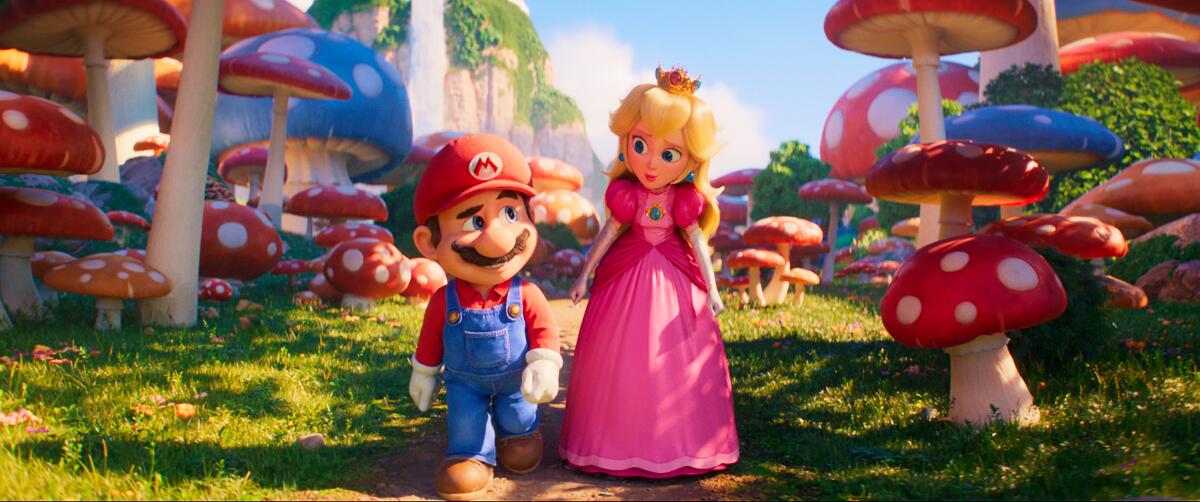
Kondo’s music encourages player movement. When Mario gets a certain power-up, the tempo increases, encouraging fans to make the most of momentary indestructibility. When time is running out, the music gets anxiously hurried, so much so that players are likely to make some mistakes. And when levels advance and get darker and go underground, the music — a spacious, slap bass sound — gets more patient, prodding players to be more careful in their timing.
While tech limitations in the ’80s restricted Kondo to three notes, he only wanted to use one of them for the underground scenes. “Then we mix that to make different timbres,” Kondo says. “It was basically playing that same melody and same note using different instruments. I wanted to create something that matched the feeling of the underground, something that had space between the notes. The silence is just as important. It’s dark, slower and a little emptier.”
Tyler picked up on that for his score. Those underground notes Kondo created are in another scene played by Jack Black’s Bowser at the piano, now a lonely, lovelorn heavy metal balladeer. As much as Tyler deviates from Kondo’s music — much of the score is lively Tyler originals — he clearly had fun remixing Kondo’s work.
“It’s interesting because Kondo was doing his version of Americana,” Tyler says. “It’s jazzy, big-band swing on 8-bit. Talking to him, and the limitations of that were just insane. The notes were short. It had such flair and personality. I would hear the music, and my brain would automatically do them in different styles.”
Thirty years ago a plump little plumber in red overalls revolutionized gaming.
The two enjoyed a relatively close working relationship. Tyler says he would regularly call upon Kondo to remind him of certain notes or pieces from various “Mario” games, as he was looking for unexpected pieces to reinterpret, including at one point waiting room music from the “Mario Kart” titles. Kondo says he tried to act as a resource when needed.
“I was content with Brian taking the lead on this,” says Kondo. “He’s the movie guy. I was very OK with him making the music for the movie. That being said, I did send over sample data for music from games that I thought might be appropriate to work into different scenes, and I was confident Brian would use that to support the music in the movie. I didn’t give any specific instructions — ‘Use this game music here’ — rather just provide a list of things I thought might work in the movie and I let him take control.”
“The only time we’d chime in was if something was not used correctly. Then we would chime in and say, ‘This needs to be used in this sort of way.’ For example, in the jungle parts of the movie, we asked them to add a lot of ‘Donkey Kong’ music and sounds,” Miyamoto says. “So those are the things that we would suggest and communicate, but the rest we left to Brian to take care of.”
Though many of Tyler’s orchestral pieces deviate heavily from the game’s music, they are all focused on propelling the fast-paced movie forward. There’s a triumphant tone to his originals, especially the music he composed for Princess Peach (Anya Taylor-Joy). Peach in the film is a long way removed from her damsel-in-distress roots, and essentially acts as Mario’s tutor throughout the film. Tyler’s music for the character is alternately uplifting, light-stepping and sweeping, and seeks to recall the blockbusters of his youth.
‘The Super Mario Bros. Movie,’ starring Chris Pratt, is mildly amusing, swift, noisy and unrelentingly paced.
“Princess Peach has the most heroic feel,” Tyler says. “The second part of her theme is really beautiful and emotional. I needed her theme to help you understand how she’s the leader and can command an army, and at the same time have a relationship with Mario. She’s kind of the Jedi knight teaching Mario how to use his powers. So her theme had the most strength.”
The ultimate success of Tyler’s score, however, is that even when it nods to the games, the work doesn’t sound vintage — or even like a video game. There’s a deftness in intermingling the widescreen orchestrals with the digital accouterments. Perhaps that’s because, like the games, Tyler’s work is rhythmically propulsive.
“There are retro references sonically, but I thought the movie would require an emotional depth — the hero’s journey and all that — that it should rely on instruments that could be more aggressive,” Tyler says. “But at the same time the melodies are played and it’s really cool. Like, if I have my theme, and I reference the ‘Mario’ theme, then the ‘Mario’ theme is brought into a recording at Warner Bros. with a symphony here in L.A. There’s that crossover.”
It’s not just referential, it’s reverential. Kondo jokes that the tech limitations of the early ’80s worked to his advantage. “I think those three notes were pretty good for my skill level,” he says. And nearly 40 years on, those three notes are at long last getting the cinematic glow-up they deserve.
More to Read
The biggest entertainment stories
Get our big stories about Hollywood, film, television, music, arts, culture and more right in your inbox as soon as they publish.
You may occasionally receive promotional content from the Los Angeles Times.
